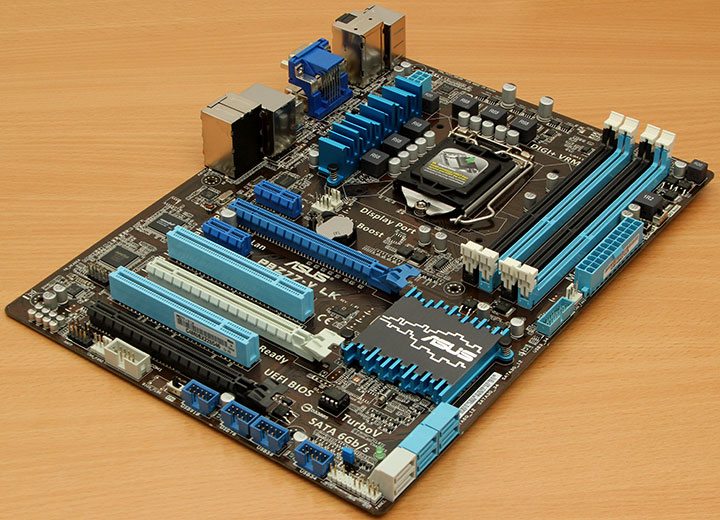Asus P8Z77-V LK (Z77) Motherboard Review
Keeping the P8Z77-V as the direct comparison for this slightly lower spec board, there are a few distinct alterations that can be seen on the PCB. The LK board is slightly narrower than its bigger brother and it also has some visual aspects that are either smaller or missing.

One of the most notable changes is around the CPU socket. The LK board features only a 4+1+1 phase power design down from the P8Z77-V’s 8+4 design. Naturally this does mean that the power delivery to the processor is not going to be as smooth and in terms of overclocking we shouldn’t expect as higher clocks as we found on the fully fledged P8Z77-V.

Due to the slightly lower specification of the board, there is also a slightly smaller heat sink over the Z77 chip, although this still follows a similar design style to the bigger heat sink on the -V.

One specification that remains unaltered is the support for up to 32GB of DDR3 memory across the four DIMMs. The LK board also offers up a native USB3.0 header like many other boards do in the current generation.

In a matched layout to the -V, Asus’ LK board also offers up native PCI expansion for users that still require them. Along side these, there is support for up to three way CrossFireX or SLI set-ups through the three x16 lanes and on top of this an additional two x1 lanes are present.

Along the header linup there is still a strong presence for USB2.0 with four headers present, and in addition to the front panel headers and HD audio the only addition is a COM port header which the higher spec boards tend to drop off.

Another feature that is a little trimmed back over the P8Z77-V is SATA connectivity, dropping two ports from the line-up, the LK board gives two 6Gb/s and four 3Gb/s ports, all controlled by the Z77 chipset.

Moving last of all round the the rear I/O, the number of options may seem a little sparse, but in fact there are almost as many connectivity options to chose from compared to the P8Z77-V, bar the option of WiFi. There are the four main display outputs, four USB3.0 and two USB2.0, a legacy PS/2 combo port, Intel Gigabit LAN and 7.1ch audio with S/PDIF. More than enough for the everyday user.










Lack of heat-sink over VRM could be concern for 24X7 overclocking systems..
Otherwise good board and very good review. 🙂